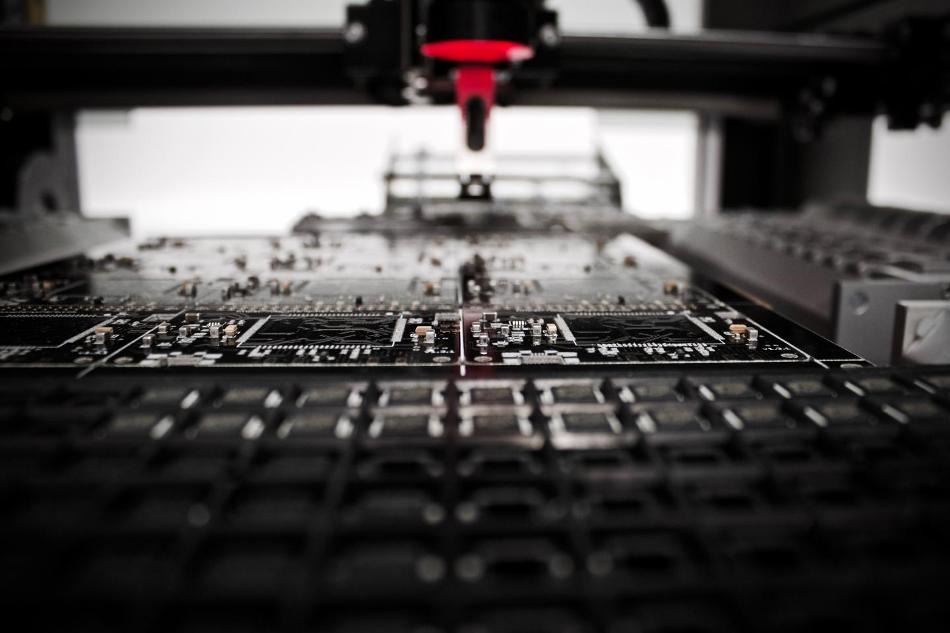Mar 22 2019
In the next 15 to 20 years—except for the information reading and recording technology—the hypersensitive sensors working under the magnetoresistive principle will be used in a large number of novel fields.
 Bristol Robotics Laboratory, Stoke Gifford, United Kingdom. (Image credit: Louis Reed@_louisreed, Unsplash)
Bristol Robotics Laboratory, Stoke Gifford, United Kingdom. (Image credit: Louis Reed@_louisreed, Unsplash)
Among these products are the position, flexible electronics, and biomedicine sensors, as well as computer-human interaction, different kinds of monitoring, autonomoustransport, and navigation. An article about this concept has been reported in the industry journal, IEEE Transactions on Magnetics.
At Far Eastern Federal University (FEFU), researchers collaborated with an international team of experts in order to detect five of the most potential application areas for magnetoresistive sensors. After performing a detailed analytical work, the team drew up development roadmaps of the sensor sector for the next 15 to 20 years and highlighted the most potential means to commercialize scientific outcomes in this research field.
Magnetoresistive sensors are distinguished by high sensitivity, low cost, low power consumption, and compactness. Their properties vary depending on the application. Today, this industry develops rapidly, sensors sensitivity increases constantly, the path from research to real technology takes a short time. We believe there is a very wide application area for such sensors. For example, in biomedicine, due to supersensitive sensors that receive signals from the magnetically marked organs of the human body and DNA molecules, it will be possible to accurately determine potential genetic diseases and select a treatment that fits best. Corresponding systems may appear around 2030.
Alexander Samardak, Associate Professor, Department of Computer Systems, FEFU School of Natural Sciences.
According to the researchers, the use of magnetoresistive technology has been found to be promising in many flexible portable electronic gadgets, such as wristbands, smartphones, and so on. Devices that run on these kinds of sensors have the potential to endure a huge number of stretching and extension/flexion cycles without compromising the sensitivity properties.
The resistance of the sensors to mechanical deformation is continuing to increase together with additional development in this field. Between 2023 and 2025 and around 2030, users will experience flexible and super flexible devices, respectively. By this period, durable and highly sensitive sensors that can be produced cost-effectively and capable of identifying rapidly flowing processes should emerge, more or less. Rather than a silicon substrate, they can be possibly printed on textiles and paper. Where the human-computer interaction systems are concerned, the wheelchair controlled by the sensor and directed by the head movement was created earlier in 2003.
Today, the movements of different parts of the human body can be effectively captured, processed, and recorded by means of magnetoresistive and inertial sensors. Highly likely, such data will soon come in handy for the development of AR and VR systems and applications.
Alexey Ognev, Professor, Department of Computer Systems, FEFU School of Natural Sciences.
One of the labs for the fabrication of such kinds of AR and VR devices functions in FEFU within the National Technology Initiative Center for Virtual and Augmented Reality opened in the university.
Integrated with high sensitivity sensors, VR and AR systems may emerge soon in the next upcoming years. Human-wearable controllers will replace the ever-present control joysticks. Moreover, sensors incorporated into biomechanical artificial limbs will improve their movements’ precision. By around 2032, autonomous vehicles systems will be completely realized and can be safely used and controlled without the participation of humans.
According to Alexander Samardak, magnetic sensor networks are utilized for implementing projects in such areas like smart medicine, including psychological aid and assistance for disabled people, smart homes, and also as a basically varied level of smart transport. In fact, sensory systems will literally interlace human life. The “cloud” will store huge amounts of readout data, which a person can access remotely from various personal gadgets, including a smartphone. With time, the demand for low-cost, reliable, and stable production of smart sensors will only continue to grow.
Furthermore, the researchers observed that sensors operating under the principle of Hall effect are the closest competitors of magnetoresistive sensors available on the market.
Scientists from China, Russia, Singapore, South Korea, Taiwan, Portugal, the Czech Republic, the United States, and the United Kingdom participated in the analytical work.
Researchers reached their conclusions on the basis of the analysis of patent statistics over the past six decades. They have also analyzed specialized scientific publications, considering the advanced and fast development of the magnetoresistive technology sector.